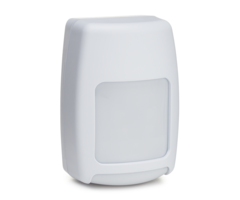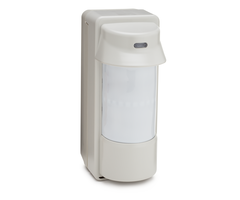Microwave vs. Passive Infrared Motion Detectors
Microwave sensors and passive infrared technology are two different methods for detecting motion. Both of these motion sensing methods operate in different manners, but they are each effective in their own way. However, the installation location is very important for either type of sensor.
A passive infrared (PIR) motion sensor works by looking out for changes in infrared energy. When the sensor takes an initial reading of the area, it will take note of any infrared energy that is currently present. If a person, a large animal or a large object comes into the view of the sensor, it will cause a sharp change in infrared energy. This will cause the sensor to send a signal to the system to produce the programmed response.
The change in infrared energy will need to be significant enough for this to happen. It is possible for a user to adjust the sensitivity setting for a PIR sensor by increasing or decreasing its pulse count. A higher pulse count will require a larger change in infrared energy for the sensor to activate, making the device less sensitive. Likewise, a lower pulse count will make the motion detector more sensitive, requiring a smaller change. Many PIR motion sensors are standalone devices that use PIR technology as their only means for detecting motion.
A microwave motion detector continuously sends out microwave signals to detect motion. When this happens, the signals will bounce off any objects that are present and return to the sensor. If no motion is present, then the microwave signals will always return to the detector in the same exact manner. But if motion occurs, then the signals will reach the sensor in a different pattern and at a different time interval. The sensor will recognize this and send a signal to the system indicating that motion is present. The system will then provide the appropriate response.
Similar to PIR sensors, microwave sensors can have their sensitivity adjusted. This involves increasing or decreasing the strength of the microwave signals that are sent out by the sensor. If the signals are too strong, it can pick up motion too easily, possibly even outside the room or building. But if the signals are too weak, then the sensor will not adequately cover the area to be protected. The user will need to find the perfect medium that prevents false alarms, while still being able to detect motion. Unlike PIR sensors, standalone microwave motion sensors do not exist, and every microwave motion detector will use another motion sensing technology alongside it. Most microwave sensors also utilize PIR technology, in what is referred to as dual-tech motion detection.
Did you find this answer useful?
We offer alarm monitoring as low as $10 / month
Click Here to Learn MoreRelated Products




Related Categories
- Pet Friendly Motion Detecting Sensors
- Motion Detecting Sensors
- Passive Infrared Motion Detecting Sensors
- Dual Tech Motion Detecting Sensors
- Honeywell 5800 Motion Detectors
- Honeywell Six Motion Detectors
- Answered



